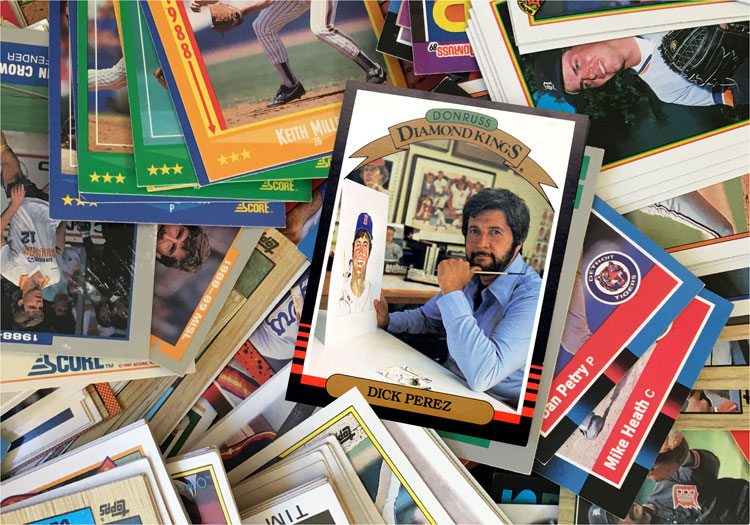
For anyone that has ever collected baseball cards, Dick Perez’s artwork is immediately identifiable. Distinguished with classic portraiture accompanied by bold graphics, Perez is the artist behind Donruss’s Diamond Kings and prior to that, the man who brought art back to baseball cards with his set for the Hall of Fame. Now 80 years old and living in NYC, Dick is working on a supplement to his 560-page career-spanning book The Immortals: An Art Collection of Baseball’s Best. We caught up with him earlier this month to talk about his life in art, baseball, and his love of tennis.
What was your introduction to sports?
I came to this country from Puerto Rico at the age of six years and my earliest memories are of baseball. Discovering the game, playing it in the streets and back lots of Harlem, and organized city youth leagues with my New York, multi-ethnic teammates. Baseball was the portal to my American experience. It was my passion as a young boy and became my muse in my art. My primary visual connection to baseball games was the television set owned by a kind tenement neighbor, and eventually, our own TV set, when my family could afford one. On a few occasions, an empathetic uncle would take me to Yankee Stadium, once to Ebbets Field. Growing up amid the tenements of Harlem made those visits to those ballparks magical. I had never seen so much unspoiled grass in so large an area.
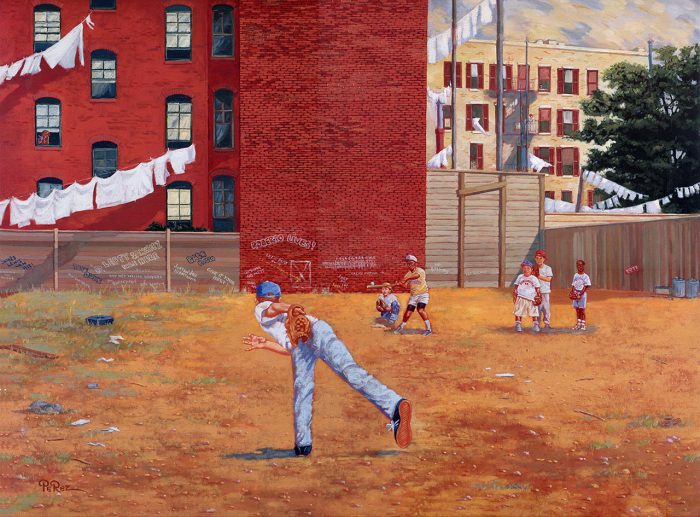
Who were your teams growing up?
New York City was baseball’s Mecca in the 1950s and thus the natural setting for becoming obsessed with the game, and for me, the Yankees.
When did you first start making art and when did you first start incorporating sports into your artwork?
In the 50s New York was also the art center of the world, but I found school trips to art museums boring. I did like to draw, though, and the margins of my school notebooks were filled with caricatures of classmates, cowboys, airplanes, and baseball images. But, I was busy preparing for a career in baseball and taking over centerfield from Mickey Mantle when he retired. I played baseball every day in that quest and I drew less and less. As it became clear that Mickey wasn’t going to retire soon, and I learned that I was not good enough to take his place, I began to play less and draw more. I did not start making sports art until later in my adult life. My involvement in sports art was evolutionary with no definitive starting point. It was a gradual development from graphic designer/art director to sports illustration.
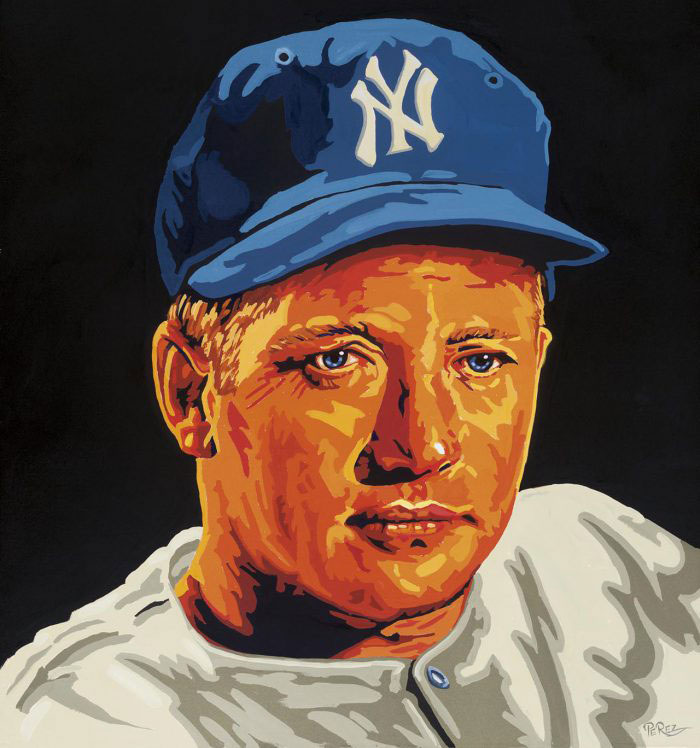
Who were your influences?
When I started to mature in my career I began looking at the work of master painters like John Singer Sargent, Joaquin Sorolla y Bastida, Anders Zorn, Diego Velazquez, and contemporary artist Lucien Freud, to name a few. Sargent, Sorolla, and Zorn were artists who thrived in the early part of the 20th century, and Velazquez was the great Spanish court painter of the 1600s. My favorite is Sargent. His magical brushwork is what I hope to emulate when I begin many of my paintings. His strokes are expressive and suggestive not painstakingly literal. It takes years to develop the flair and confidence to paint in this manner. It is an Impressionist point of view though Sargent is not considered a true Impressionist. His style conveys that an artist’s hand and creative thinking, not a camera, is responsible for the image.
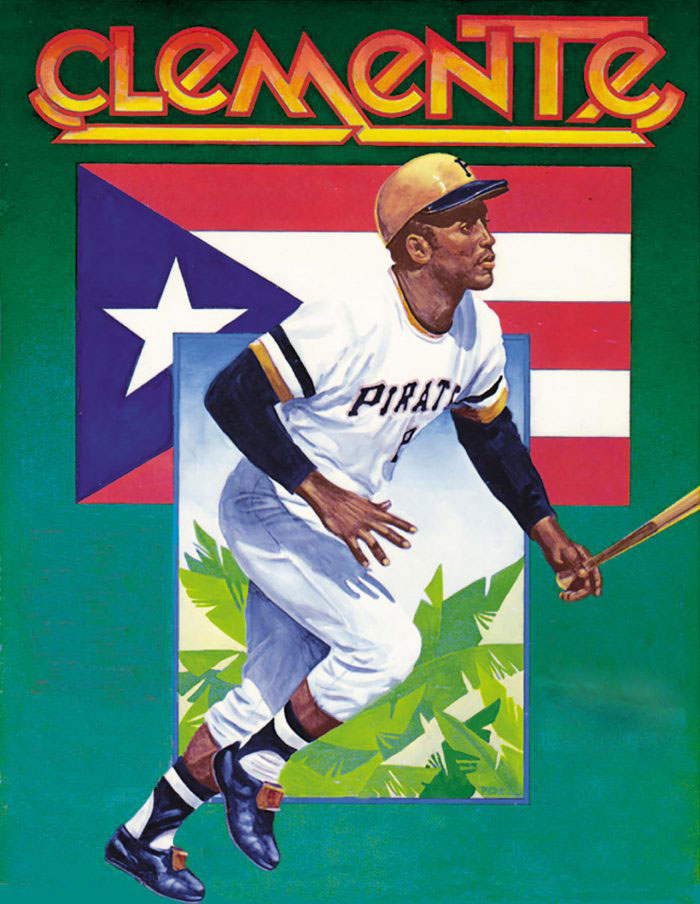
How did you get your start and eventually begin working with the Phillies? What did the job entail?
I started out as a graphic designer designing publications for Universities including the sports information departments of those institutions. My contact at Villanova University became the general manager of the Philadelphia Eagles and in addition to design work, I began doing sports illustration for the team and the NFL. The Phillies ended the relationship with their ad agency in 1972 and were bringing all marketing and advertising activities in-house. They needed someone on a freelance basis to deal with their publications and ads. My work for the Philadelphia Eagles caught the Phillies eyes and they asked to meet with me. My role, in the beginning, was designing their yearbooks, promotional material, and eventually evolved to marketing consulting, some writing, printing buyer, creating posters and all their art needs.
When did your partnership with Baseball’s Hall of Fame begin?
In 1976 I met Frank Steele, a marketing wizard, and an ardent collector of baseball relics and memorabilia, and he had a connection to the Baseball Hall of Fame. At the time there were no consistent color images of the Hall of Fame members for collectors. I proposed a set of art cards that would feature every Hall of Famer painted in full color, and in the same style and manner.
The idea hit me on a day I was at Frank’s home and happened to be admiring the first baseball card that Frank had ever purchased, a 19th century Allen & Ginter Tobacco Co. rendition that he had picked up in a Bucks County, Pennsylvania flea market.
I wondered out loud, “Why don’t they make baseball cards like that anymore?
“Nobody paints like that anymore,” Frank replied.
“I can paint like that,” I said.
“You paint like that,” he told me, “and we’ll sell them from door to door if we have to.”
Frank got in touch with his friend Ed Stack who happened to be the president of the Hall of Fame, and Perez-Steele Galleries was born.
The cards created a sensation in the baseball memorabilia collector world; we produced other products with the Baseball Hall of Fame and maintained a close relationship with the institution. For over twenty years I was considered the official artist of the Baseball Hall of Fame. So I must add, Frank Steele was an important component of my career in sports art.
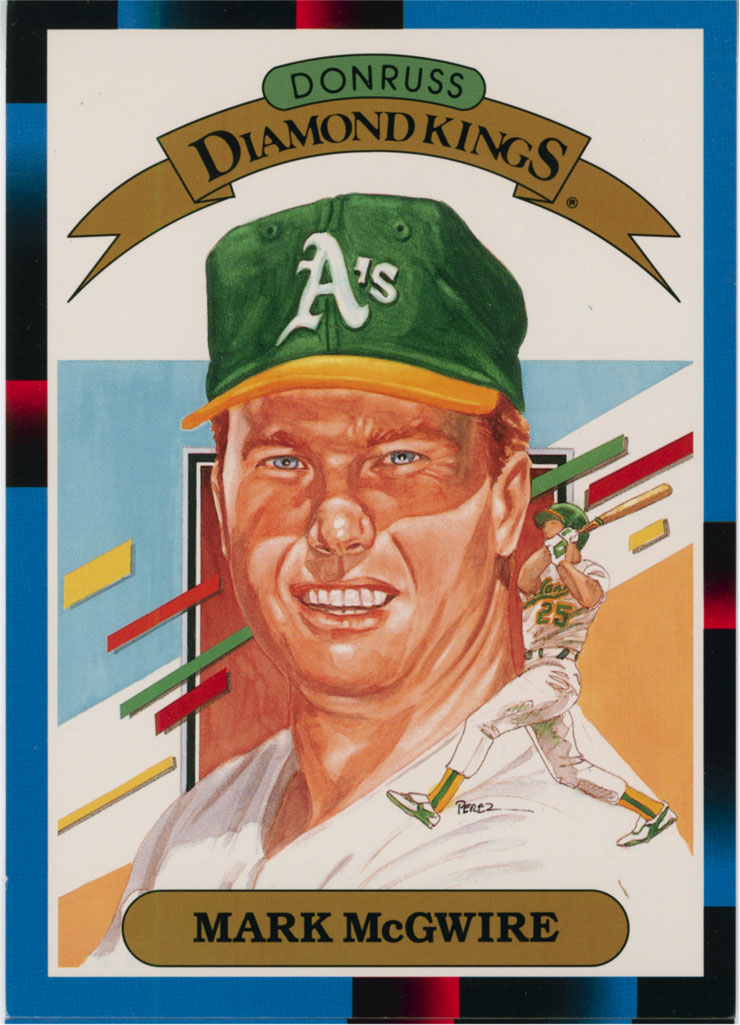
And from there, the Donruss Diamond Kings project happened?
In the 80s, court rulings opened the gates to allow more participants to produce baseball cards and dissolved the monopolistic hold that Topps had on the industry. When Donruss entered the baseball trading card market in 1981 they were looking for a way of distinguishing themselves from the rest of the field. Donruss was not a new company. They created Elvis cards, golf cards, cards for TV shows, and a variety of other entertainment cards, but knew nothing about baseball. They somehow managed to get a baseball license and found themselves on a Monday morning wondering, “Now what do we do?” New York Daily News and Hall of Fame sportswriter, Bill Madden, a collector of Perez-Steele Hall of Fame art cards, knew the folks at Donruss and suggested they talk to Frank Steele and me about ideas. I wanted to see the use of art back in baseball cards so we proposed a subset of baseball art cards as a way of separating Donruss from the rest of the pack. The subset would be made up of 26 cards, each card featuring a player from each MLB team. The “Diamond Kings,” as they were called, were a huge success, and I painted them for 15 years. It was just another thing that added to my standing in the realm of sports collecting.
How did you come up with the styles for the backgrounds?
The image for baseball cards has to be less scenic and more portraiture. The player usually dominates over the background. There is no room for expansive background narrative commentary, so it is a greater task to make the treatment of faces and poses and backgrounds more interesting and different. For the early years, I guess I drew on my graphic design training to create a variety of backgrounds. Later on, I got tired of that and created paintings with more action poses and painting techniques.
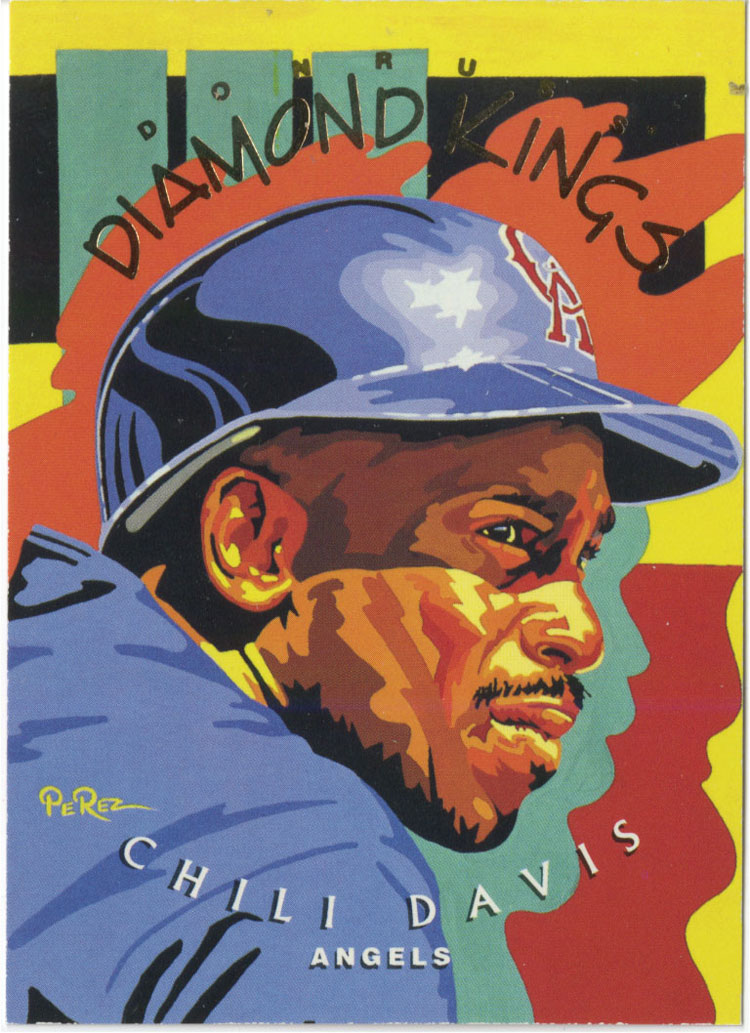
Do you have any favorite Diamond King portraits? What was your favorite year of card style?
My favorite Diamond King subset year was 1995. And while I have many favorite portraits from other years, my favorite is the 1995 Chili Davis.
Who are your favorite ballplayers now and of all time?
Growing up in New York City made me a Yankee fan and Mickey Mantle was my baseball hero. But in my adult life, my true heroes of the game are Jackie Robinson, Roberto Clemente, Hank Greenberg, and Larry Doby. It is unimaginable to consider what they went through playing during their times as pioneers and still excel to become Hall of Famers. And I must add that of all the members of the Baseball Hall of Fame that I met Ted Williams was my favorite. Not so much for the numbers that got him there, but for his honest approach to life, caring personality, and loyalty to the game, the Hall of Fame, and the Red Sox organization. We would play in the tennis tournaments during Hall of Fame weekends. He was in his seventies, but even then his competitive fire was the one that burned during a distant youth. I got to know him pretty well. He appreciated my work and my tennis. In recent times I’ve always admired and loved to see Derek Jeter play, and have had nice encounters with Steve Carlton. Currently, though I have never met him, I like Aaron Judge for the way he conducts himself as a person, and as a player. I hope he stays healthy.
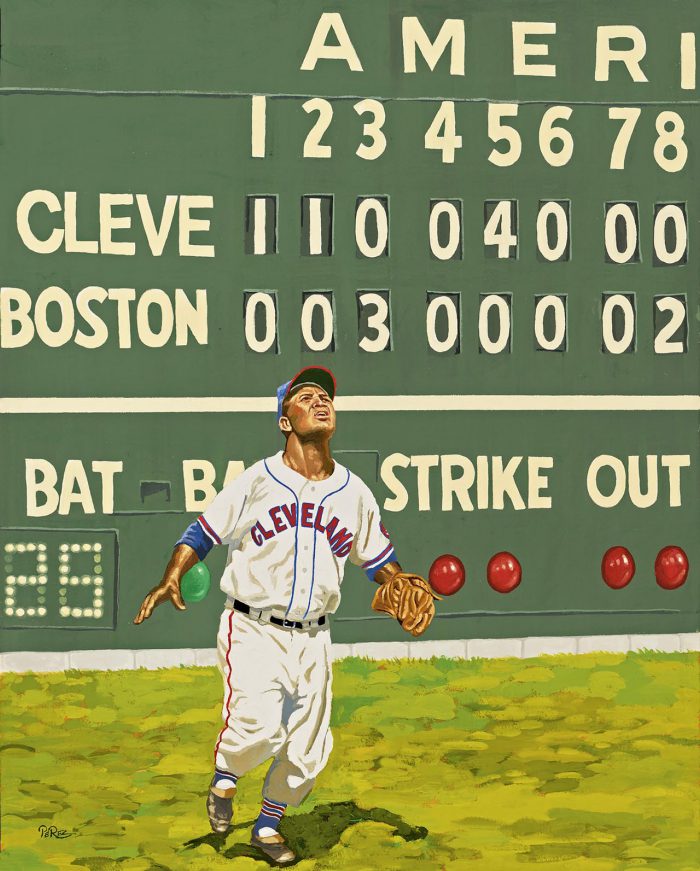
Can you talk more about these Hall Of Fame weekend Tennis Tournaments? Who were the players playing?
In order to entice the living Hall of Famers to keep coming back to induction weekends, they created a golf tournament. It was played on Saturday and Sunday and seemed to attract many former Hall members. Commissioner Bowie Kuhn who attended every year was not a golfer but loved to play tennis, so he told the Hall to have a tennis tournament too. The 5 or 6 courts were located at the same golf club. Though most former players preferred playing golf, there were a few who played tennis or thought they could. Most of the participants were MLB executives, and me. It was all doubles and included women. If you go to my website and go to About the Artist you will see a bunch of thumbnails among which are a few pictures of me with some of the players I played with or against. The competition was not that great and I wound up winning quite a few of them, depending on who was my partner. The best players I played with were Brooks Robinson, Hank Aaron (strong serve), Frank Torre, and maybe a few I can’t remember. By and large, they were mainly hacks. I was told that Joe Morgan was really great, but preferred to play golf because it was better for his knees.
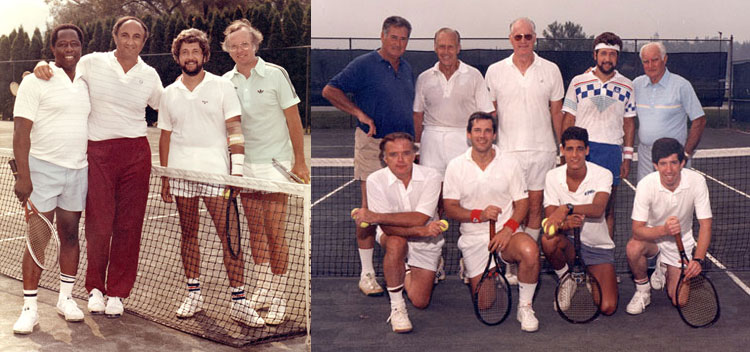
Did you ever hit regularly with any players?
Only Monte Irvin and Joe Morgan’s wife who was an excellent tennis player. Mostly it was the tournament.
From pictures, you had a great on-court style. How is your tennis game and do you still get out and play?
I am merely a club player who took the game up when I was 35 years old. I became obsessed with the game had a lot of lessons, tennis camps, and it is the only sport I now watch. I guess playing a lot of baseball in my young life helped me adapt to the game, especially my serve (I’m a lefty). I amounted to a 4.5 level, and now I’m an old 4.5, which isn’t very good. I used to play 4-5 times a week, but sadly only get out on court about once a week since I moved to NYC. I have a few trophies.
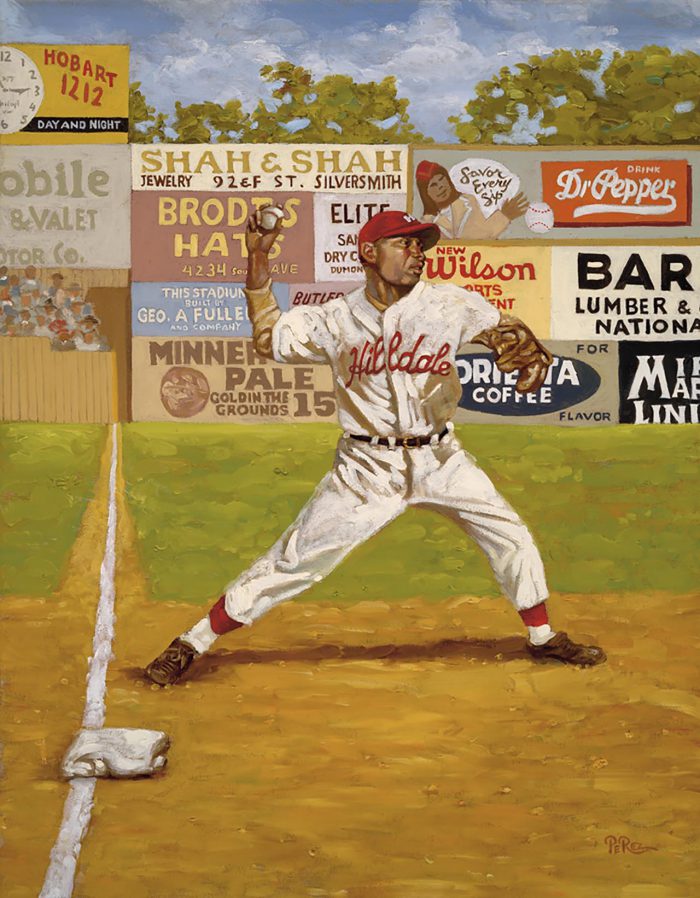
What are the proudest moments in your art career?
It has been a long career I’ve been fortunate that it is filled with proud moments. But if I had to pick one it would be the one-man exhibition at the Pennsylvania Academy of Fine Arts, this nation’s first museum and teaching institution. The 32 painting exhibit, commissioned by the Phillies, featured Baseball Hall of Fame players who had some connection to the Philadelphia area. I believe it is the only time a major museum has devoted such attention to a sports artist. To add to that accomplishment these works are on permanent display at the Philadelphia Phillies’ Citizens Bank Park. This would be followed by my rewarding relationship with the Philadelphia Phillies, my Baseball Hall of Fame connection, having two of my paintings residing in the presidential libraries of Ronald Reagan and Bill Clinton, the many awards bestowed on my book “The Immortals”, and of course, after many years I am finally getting rewarding feedback from the many Diamond King kids who have grown up and have bathed me with comments on my treatments for those cards, my use of color, and my straying from realism. The older crowd is just moved by the paintings. They talk more about the artwork than the subjects.
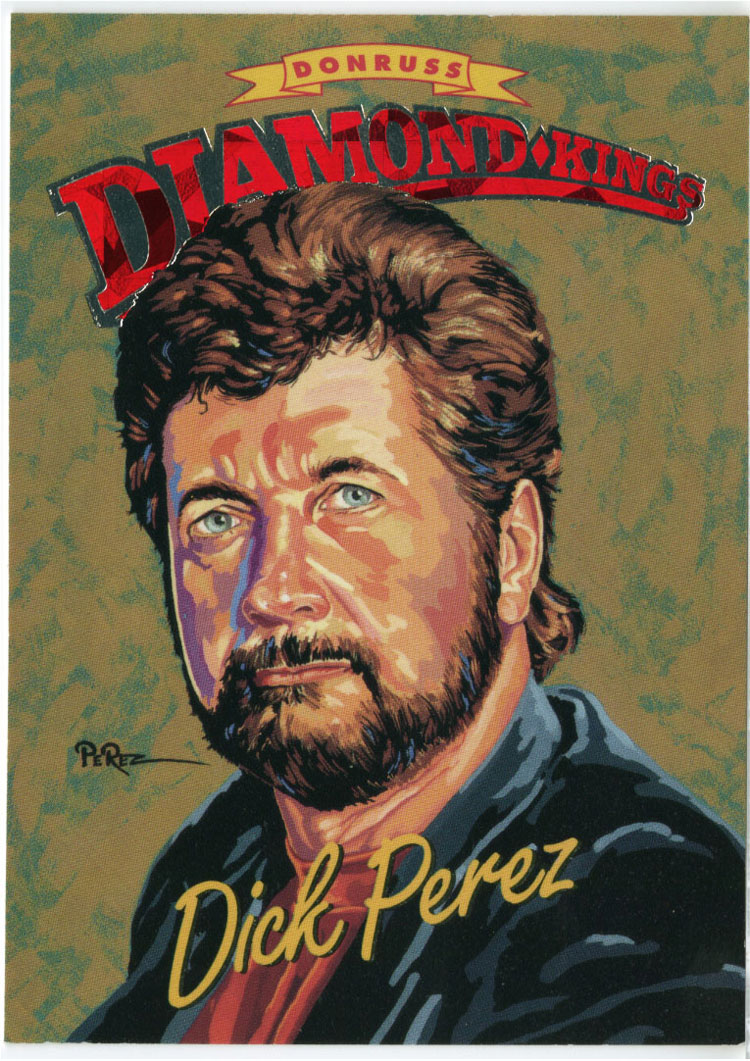
Learn more about Dick Perez and his artwork at DickPerez.com

